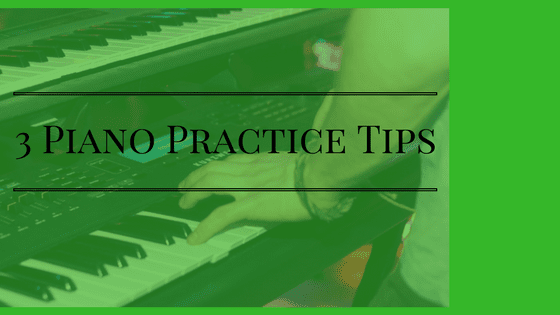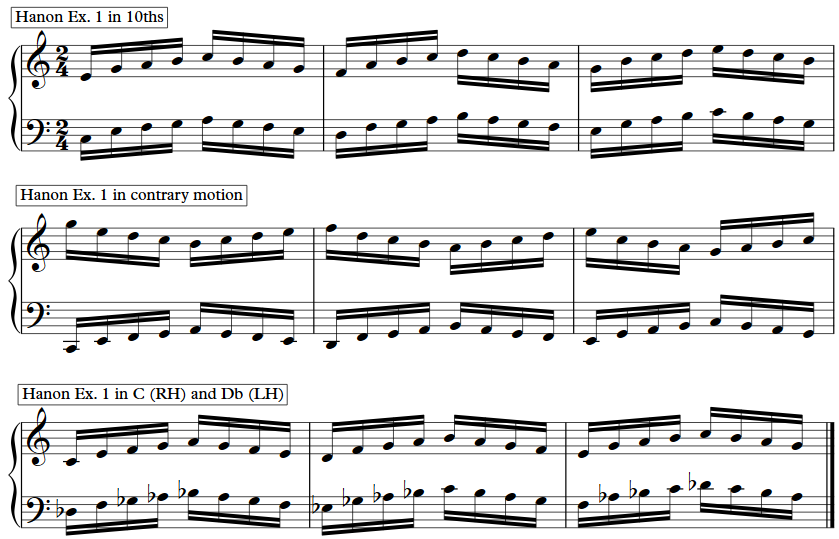3 Piano Practice Tips for the New Year

In preparation for the New Year's resolutions that we all like to make (and often break) I'm bringing you 3 of my "Top Piano Practice Tips" in this article. Much like going to the gym or learning a new language, improving at the piano (or any musical instrument) is about doing a little bit at a time, setting small goals as part of a larger plan, and staying the course as you establish a routine. Although there are certainly musicians with natural, innate talent and ability, there is no substitute for practice. As I get wiser as a player and teacher I've noticed that the biggest thing that sets players apart in terms of their ability is not their level of talent, or the quality of gigs, or their gear - it's their approach and commitment to practice.
Here are 3 Piano Practice Tips for the New Year that you can use to help establish paths of success and move closer towards achieving your goals. Implicit in all of these tips is the idea that you need to make practice a regular and recurring aspect of your day. The faster you can establish a practice routine (i.e., practicing everyday at the same time and place) and good practice habits (i.e.,structuring your practice with warmup exercises that then move towards repertoire and improvisation practice, for example), the faster you'll notice the positive results.
Piano Practice Tip #1: Find some new ways to use your metronome.
All musicians know the importance of using the metronome in order to establish a strong sense of time and rhythmic precision. But often times the metronome can become a droning, frustrating presence in the practice room that can cause students to take shortcuts or move on to something new without finishing the task at hand. Sometimes this is simply because the metronome is perceived more like the "time and rhythm police" instead of an additional musician in your practice session. Instead of always placing the metronome on downbeats (for example, beats 1, 2, 3, and 4 in a 4/4 meter), try placing the metronome on the upbeats (i.e., the 2nd 8th-note pulse of each beat). Or, try placing the metronome only on beat 1, beat 2, beat 3, or beat 4. By working with the metronome in new and creative ways, you can find more stimulating ways to practice rhythm and time.
Piano Practice Tip #2: Challenge yourself when playing through scales, Hanons, and other exercises.
Hanon exercises are an excellent way to improve your dexterity, finger independence, articulation, and speed. But they can also get a bit tedious and... well, boring. Instead of playing scales and Hanon exercises as written, challenge yourself by trying the following:
- Play exercises/scales in various intervals, such as 10ths, 6ths, and 4ths. Pay special attention to the unique sound of each interval;
- Play exercises/scales in contrary motion, one hand ascending while the other descends;
- Try using one of the two suggestions above and incorporating the metronome idea from Tip #1;
- For a really crazy challenge, try playing a Hanon exercise in 2 different keys simultaneously (i.e., right hand plays in the key of C, left hand plays in Db).
Piano Practice Tip #3: Make a list.
Actually, make many lists. In my private lessons I have all students keep a notebook which I use to write down their weekly lesson homework. This way, the student has an ever-expanding record of what they've studied and how much progress they've made, and I (as a teacher) can better adjudicate their rate of improvement and what they've accomplished. But if you're not taking private lessons you can still use this approach. Make a list of what songs you'd like to learn, or which skills you'd like to develop and the exercises that will help you improve those skills. In your practice, try to learn and memorize one new song each week and watch how quickly your repertoire will expand.



